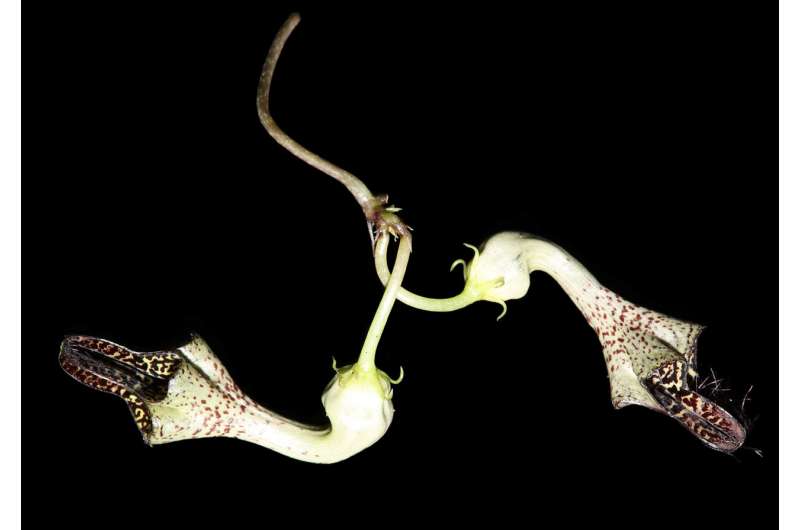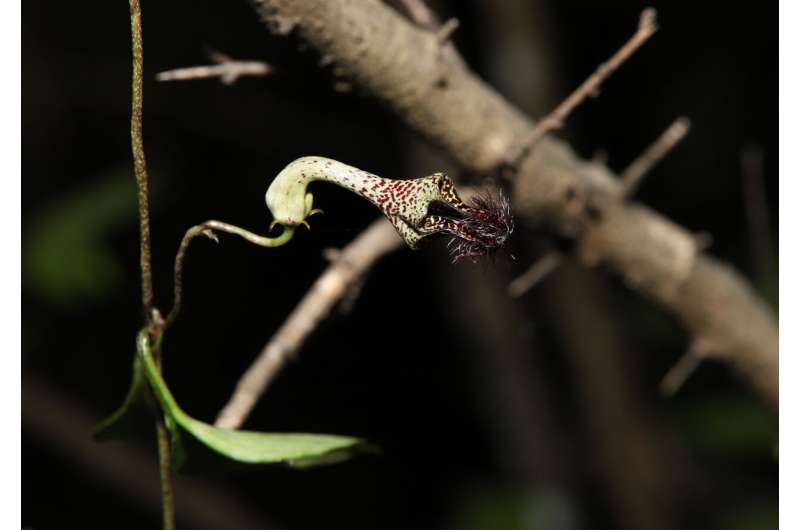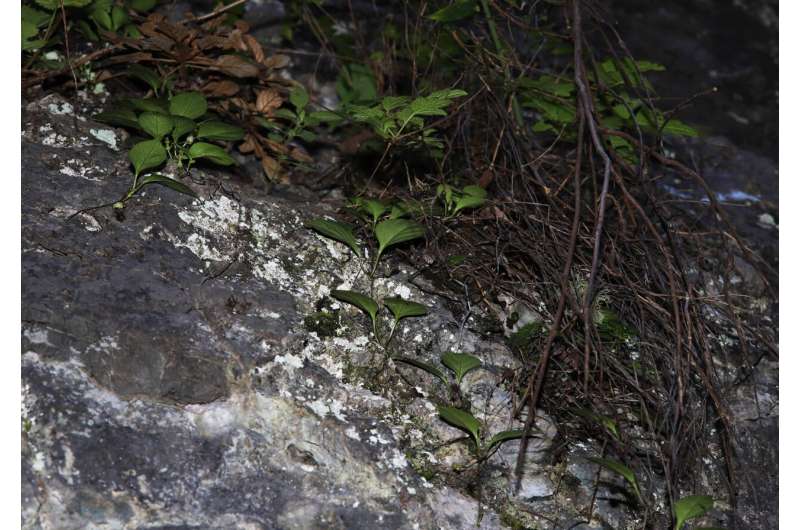Ceropegia eshanensis. Credit: SHEN Jianyong
Ceropegia is a genus of plants in the Apocynaceae family, native to Africa, southern Asia, and Australia. According to a recent phylogenetic study, Ceropegia contains more than 700 species in 63 sections. Ceropegia sect. Chionopegia is mainly distributed in the Himalaya region, Pakistan and India eastwards to China. About 18 Ceropegia species belong to sect. Chionopegia in China.
During a botanical exploration in Luzhi River valley, Yunnan, researchers from the Xishuangbanna Tropical Botanical Garden (XTBG) of the Chinese Academy of Sciences collected an unknown Ceropegia species belonging to sect. Chionopegia.
After a literature review and morphological studies, the researchers confirmed that it was a new species to science. They named it as Ceropegia eshanensis to refer to its type locality in Eshan County, Yunnan, and published it in Taiwania.
Ceropegia eshanensis is a perennial creeping to twining herb. It differs clearly from C. driophila and C. exigua in having densely verrucose lenticellate old stems, leaf blades ovate to elliptic, glabrous, base broadly cuneate, slightly decurrent, longer peduncles. It can also be readily distinguished from C. exigua by its longer petioles and interstaminal lobes divided into pairs of triangular teeth at the apex.
Ceropegia eshanensis. Credit: SHEN Jianyong
Throughout the whole expedition, only one population of Ceropegia eshanensis was found, sporadically distributed in semi-humid evergreen broadleaf forest and twining around branches in the thickets near Fawu Village in Eshan. Its habitat is inevitably disturbed by local villagers.
As a result, the researchers classify its conservation status as "Critically Endangered" (CR) according to the International Union for Conservation of Nature Red List of Threatened Species categories and criteria.
Ceropegia eshanensis. Credit: SHEN Jianyong
More information: Xing-Da Ma et al, Ceropegia eshanensis, a new species of Apocynaceae from Yunnan, China, Taiwania (2023). DOI: 10.6165/tai.2023.68.75. taiwania.ntu.edu.tw/abstract/1908
Provided by Chinese Academy of Sciences


























